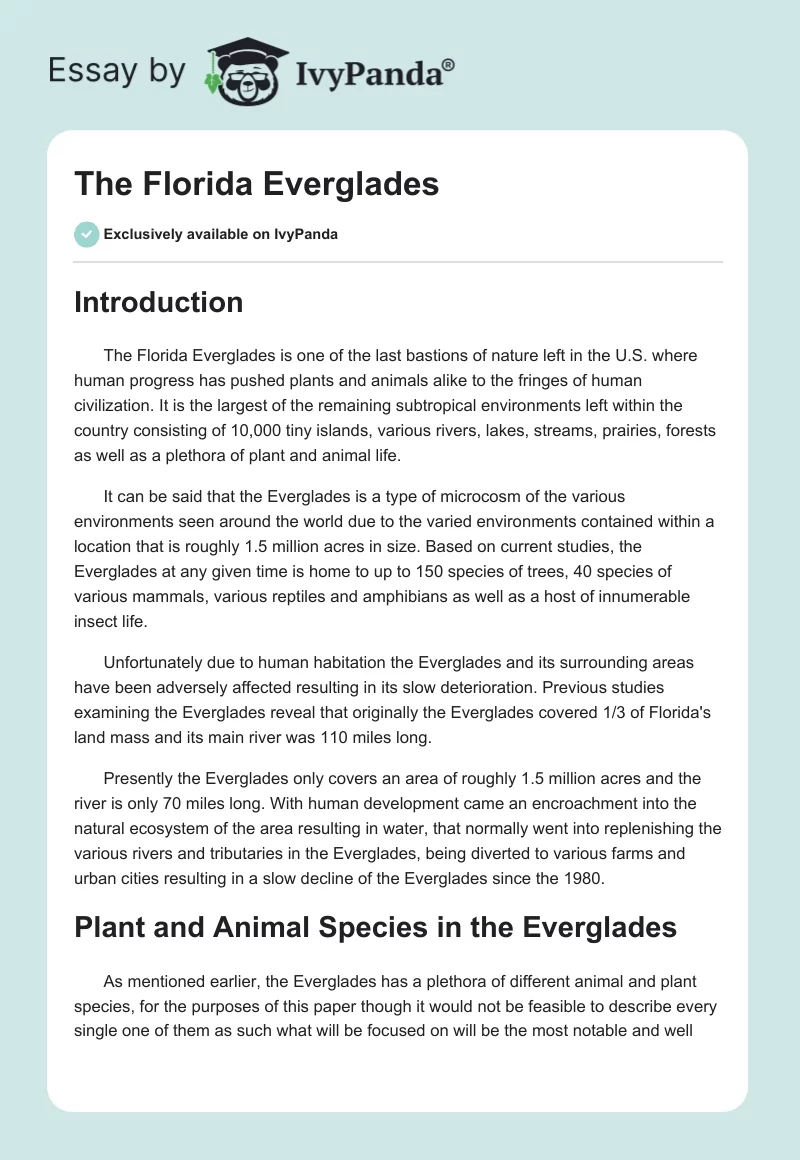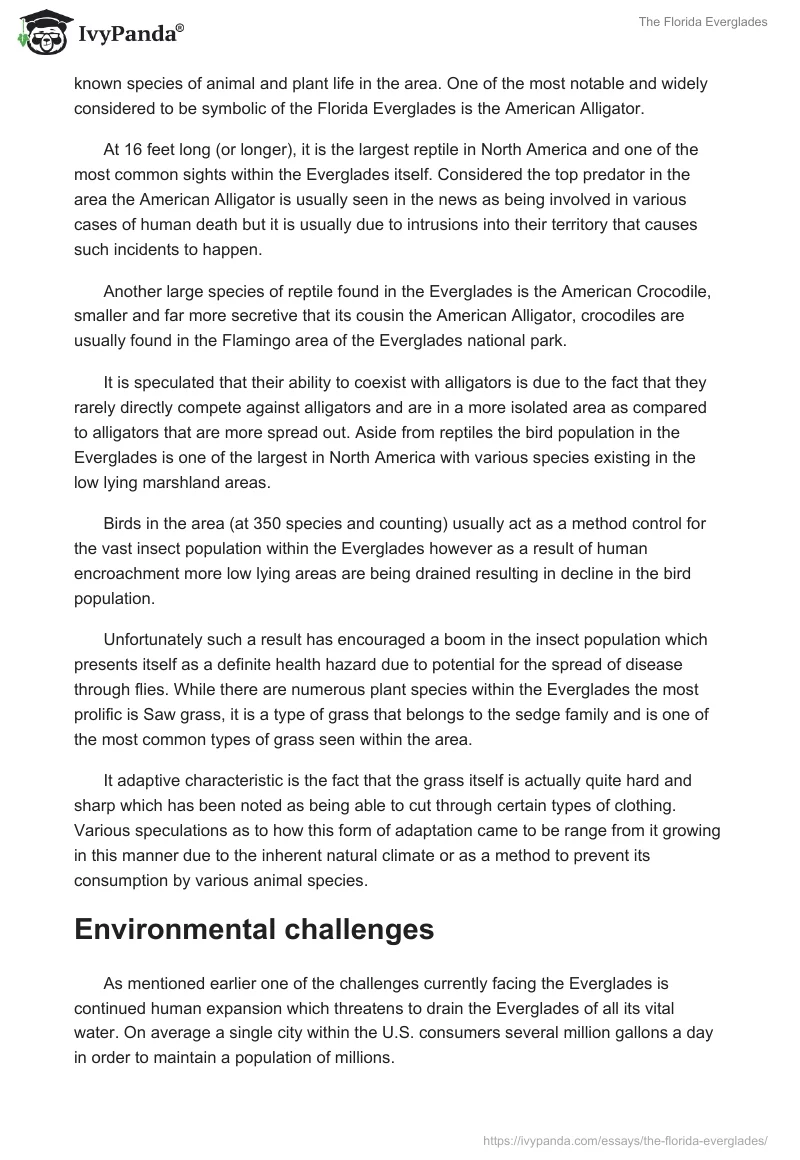Introduction
The Florida Everglades is one of the last bastions of nature left in the U.S. where human progress has pushed plants and animals alike to the fringes of human civilization. It is the largest of the remaining subtropical environments left within the country consisting of 10,000 tiny islands, various rivers, lakes, streams, prairies, forests as well as a plethora of plant and animal life.
It can be said that the Everglades is a type of microcosm of the various environments seen around the world due to the varied environments contained within a location that is roughly 1.5 million acres in size. Based on current studies, the Everglades at any given time is home to up to 150 species of trees, 40 species of various mammals, various reptiles and amphibians as well as a host of innumerable insect life.
Unfortunately due to human habitation the Everglades and its surrounding areas have been adversely affected resulting in its slow deterioration. Previous studies examining the Everglades reveal that originally the Everglades covered 1/3 of Florida’s land mass and its main river was 110 miles long.
Presently the Everglades only covers an area of roughly 1.5 million acres and the river is only 70 miles long. With human development came an encroachment into the natural ecosystem of the area resulting in water, that normally went into replenishing the various rivers and tributaries in the Everglades, being diverted to various farms and urban cities resulting in a slow decline of the Everglades since the 1980.
Plant and Animal Species in the Everglades
As mentioned earlier, the Everglades has a plethora of different animal and plant species, for the purposes of this paper though it would not be feasible to describe every single one of them as such what will be focused on will be the most notable and well known species of animal and plant life in the area. One of the most notable and widely considered to be symbolic of the Florida Everglades is the American Alligator.
At 16 feet long (or longer), it is the largest reptile in North America and one of the most common sights within the Everglades itself. Considered the top predator in the area the American Alligator is usually seen in the news as being involved in various cases of human death but it is usually due to intrusions into their territory that causes such incidents to happen.
Another large species of reptile found in the Everglades is the American Crocodile, smaller and far more secretive that its cousin the American Alligator, crocodiles are usually found in the Flamingo area of the Everglades national park.
It is speculated that their ability to coexist with alligators is due to the fact that they rarely directly compete against alligators and are in a more isolated area as compared to alligators that are more spread out. Aside from reptiles the bird population in the Everglades is one of the largest in North America with various species existing in the low lying marshland areas.
Birds in the area (at 350 species and counting) usually act as a method control for the vast insect population within the Everglades however as a result of human encroachment more low lying areas are being drained resulting in decline in the bird population.
Unfortunately such a result has encouraged a boom in the insect population which presents itself as a definite health hazard due to potential for the spread of disease through flies. While there are numerous plant species within the Everglades the most prolific is Saw grass, it is a type of grass that belongs to the sedge family and is one of the most common types of grass seen within the area.
It adaptive characteristic is the fact that the grass itself is actually quite hard and sharp which has been noted as being able to cut through certain types of clothing. Various speculations as to how this form of adaptation came to be range from it growing in this manner due to the inherent natural climate or as a method to prevent its consumption by various animal species.
Environmental challenges
As mentioned earlier one of the challenges currently facing the Everglades is continued human expansion which threatens to drain the Everglades of all its vital water. On average a single city within the U.S. consumers several million gallons a day in order to maintain a population of millions.
Within Miami, one of the largest cities in the U.S., being an hour’s drive away from the Everglades this means that the city directly sources its water from various man made canals and tributaries that feed off the main rivers within the area. Combined with the various home owned and corporate farms within the area this results in the draining of millions of gallons a day, faster than the river can replenish itself with.
The result is slow deterioration of the marshlands which continued to shrink the Everglades year. It has been estimated that if nothing is done within the immediate future the Everglades will disappear by 2035 or 2050 as continued human expansion and consumption shrinks the natural resources available within the immediate area.


